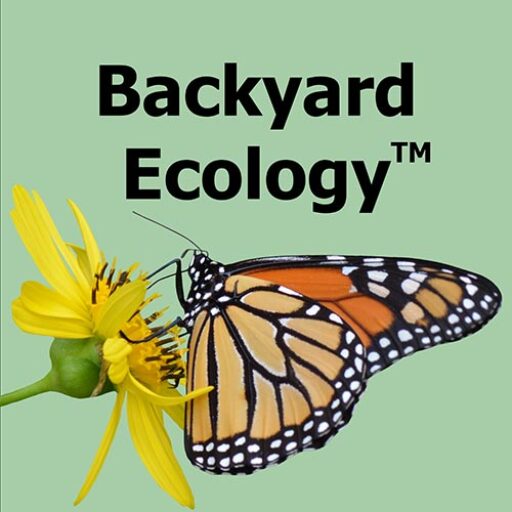Tag: Caterpillar
-
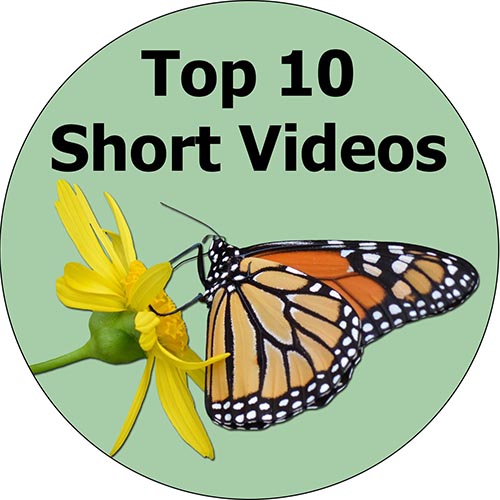
Top 10 Backyard Ecology “Shorts”
The Backyard Ecology YouTube channel was started in the spring of 2022. We review the top 10 shorts on that channel as of Thanksgiving 2023.
-
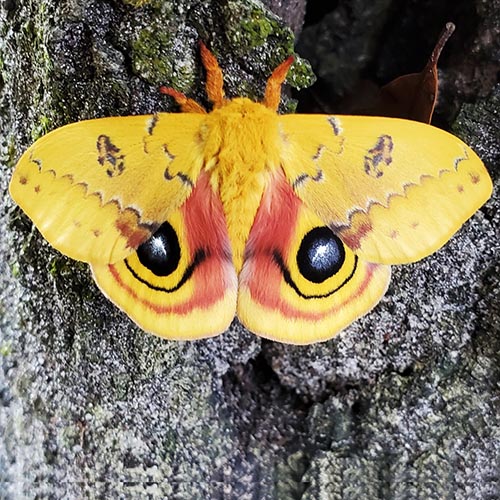
Moths: Unsung Heroes of Pollination and Beyond
in PodcastDid you know that there are approximately 10 times more moth species worldwide than there are butterfly species? Or that without moths we would have fewer songbirds, less genetic diversity in many of our native plants, and lower harvests of many popular fruits? Or that creating better moth habitats around our homes also benefits our…
-
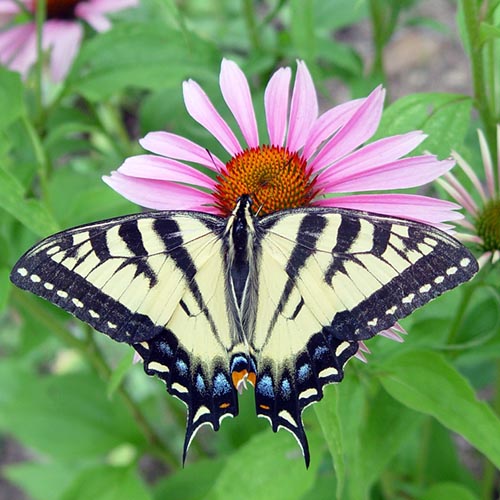
5 Tips for Attracting Butterflies to Your Yard
If you are interested in attracting butterflies to your yard, then you aren’t alone. Many people dream of having lots of beautiful butterflies flitting across their property. To accomplish your dream of attracting butterflies, you may be thinking about planting a butterfly garden or you may have already planted one. Butterfly gardens are extremely popular…
-
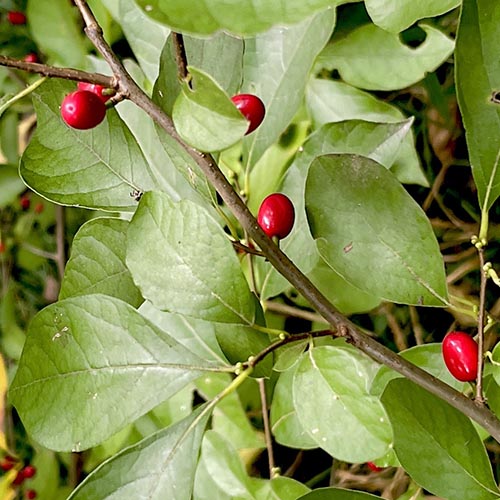
Spicebush – A Native Shrub with Plenty to Like
By: Anthony Trimboli When we think of native shrubs that have four season interest the hollies often come to mind. Their bright red berries, spring bloom and foliage are all hard to beat when it comes to looking good in the landscape. But there is another alternative to the hollies that has many of the…
-
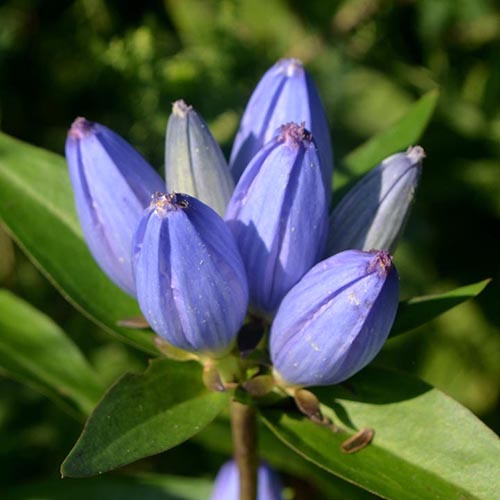
Growing Native Plants, Insect-Plant Interactions, Playing in the Pond, and Much More with Dr. Randi Eckel
in PodcastYou know how sometimes you’ll meet someone and things just “click?” You quickly discover that you have lots of shared interests and experiences and your conversation just flows as it goes down one path and then the next. Well, that’s exactly what happened in this episode as I talked with Dr. Randi Eckel. Randi is…
-
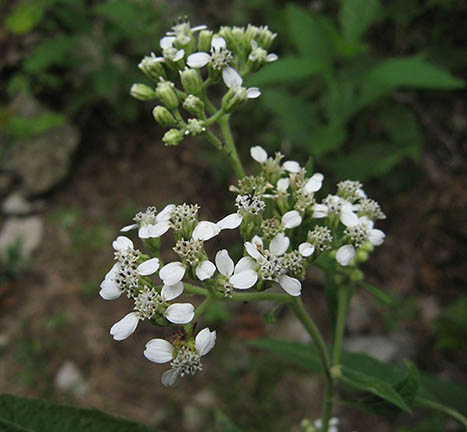
White Wingstem: A Late Fall Nectar Source and Frost Flower Producer
When we think about early winter interest in the garden or landscape, we are often thinking about trees or shrubs that have interesting bark or brightly colored berries. Native grasses can also provide early winter interest with their golden browns and attractive seedheads. However, rarely do we think about herbaceous plants as a source of…
-
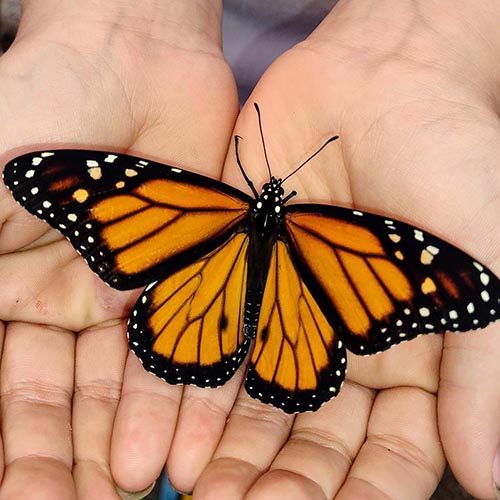
Monarch Butterflies and OE (Ophryocystis elektroscirrha)
in PodcastMonarch butterflies have become an increasingly hot topic in recent decades, and especially in the last couple of years. Conversations about monarchs often revolve around topics like their migrations, the importance of milkweeds, or other flowers we can plant for monarchs. Rarely do the topics of monarch health or monarch diseases come up. Yet these…
-
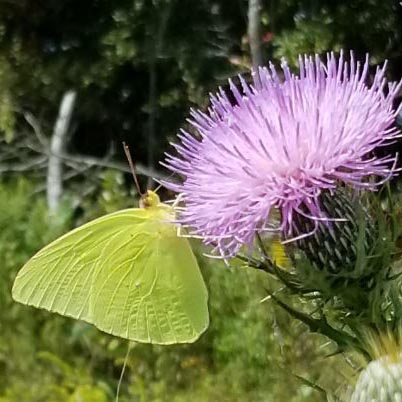
Cloudless Sulphur Butterfly: A Common Fall Migrant
One of the many things I love about the fall is watching all the cloudless sulphur butterflies (Phoebis sennae) flying across our yard and fields. They always remind me of little drops of sunshine fluttering through the air. Cloudless sulphurs can be found in most of the eastern U.S. They are more common from approximately…
-
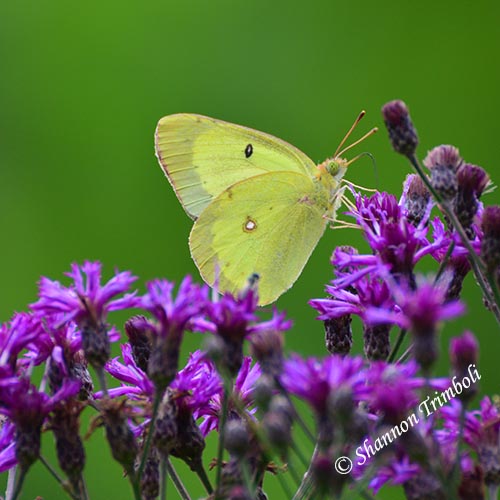
Tall Ironweed: A Beautiful Source of Fall Nectar and Pollen
Ironweeds are perennial, native wildflowers that produce beautiful, purple blooms about the time the goldenrods start to light up the fields. There are approximately 15 different species of ironweeds (Vernonia spp.) in the eastern U.S. with more out west. The most widespread species in the eastern U.S. is tall ironweed or giant ironweed (Vernonia gigantea…
-
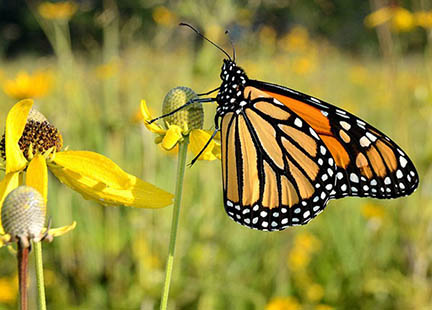
Everything You Need to Know about the IUCN Listing of the Monarch Butterfly
in Take ActionOn July 21, 2022, the IUCN listed the migratory population of the monarch butterfly as endangered on their Red List of Threatened Species. Monarch butterflies are so familiar and so beloved that the reaction was immediate and passionate. In many cases, it was also misinformed. So, let’s dig in a little deeper and talk about…
-
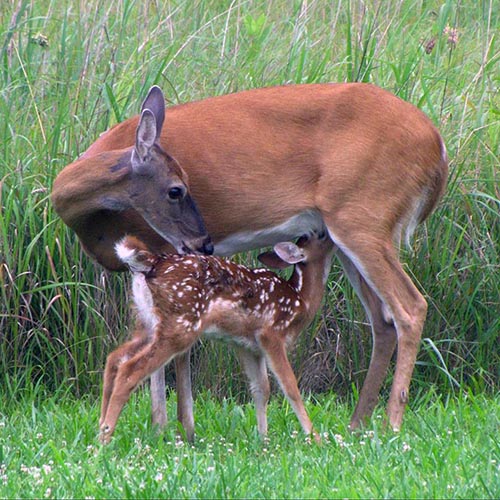
Summertime Activities and an Exciting Backyard Ecology Announcement
in PodcastSummer brings with it butterflies, lightning bugs, caterpillars, hummingbirds, fawns, baby birds, and so much more. It can be a really fun time to just get outside and observe all of the fascinating plants and animals around us. There are also plenty of things that we can be doing at this time of year to…
-
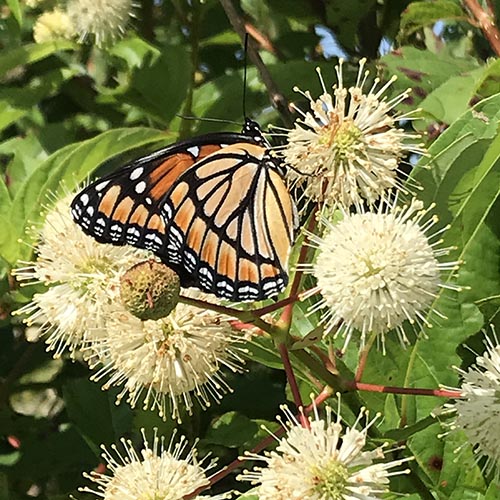
Buttonbush: A summer extravaganza for pollinators
Introduction Buttonbush (Cephalanthus occidentalis) is a deciduous shrub native to the eastern half of North America. It can be found growing naturally along creeks, ponds, lakes, and other fairly wet areas. Buttonbush can also be grown as a native ornamental in mostly sunny areas where the soil is on the moist side of medium to…
-
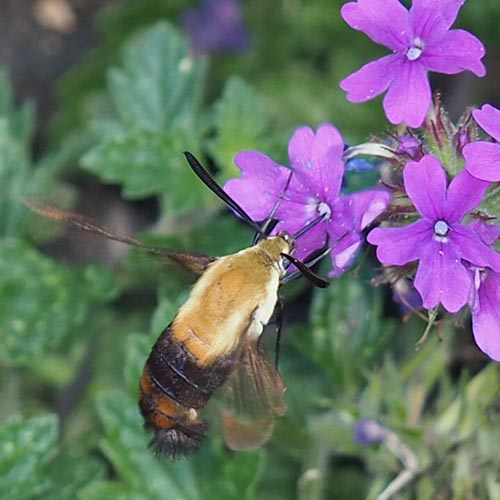
Bumblebee moth: The moth that looks like a hummingbird and a bumble bee had a baby
Have you ever caught a quick glimpse of a tiny “hummingbird” hovering around a flower? Then realized that not only was it too small, but it also wasn’t the right colors and wasn’t producing the characteristic hum. Perhaps it looked like a hummingbird and a bumblebee had a baby. Don’t worry. You aren’t going crazy…
-
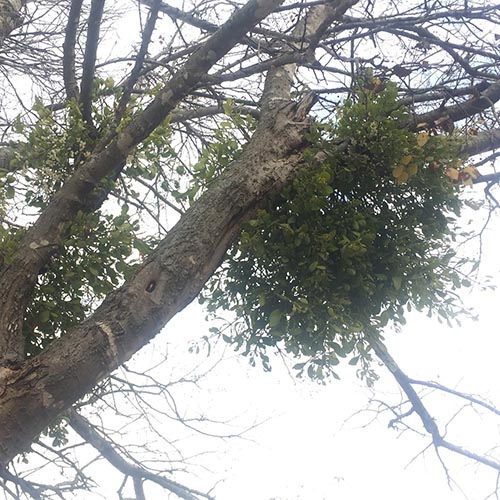
American Mistletoe – A Holiday Plant Enjoyed by Pollinators and Wildlife
It’s hard to miss the basketball-sized clusters of green leaves decorating the bare upper branches of trees as they reach up to the winter sky. Those basketball-sized clusters of leaves are most often mistletoes. There are several different species of mistletoe in North America, and even more in other parts of the world. Some prefer…
-
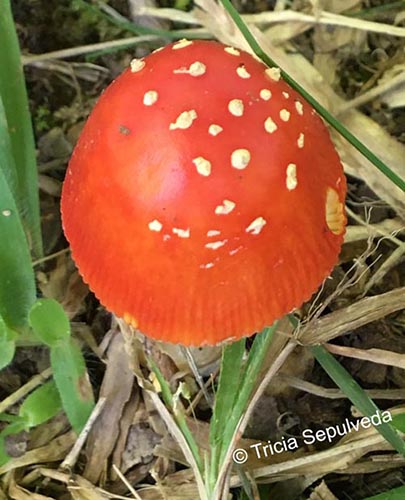
Nature-related Discoveries in My Yard and Community – October and November 2021
What a difference a couple of months have made! The leaves have fallen off the trees and I can once again see the road from my house. The fall warblers have migrated through and my winter suite of birds are arriving. The flowers have stopped blooming and beautiful seed heads have replaced the blossoms. Below…
-
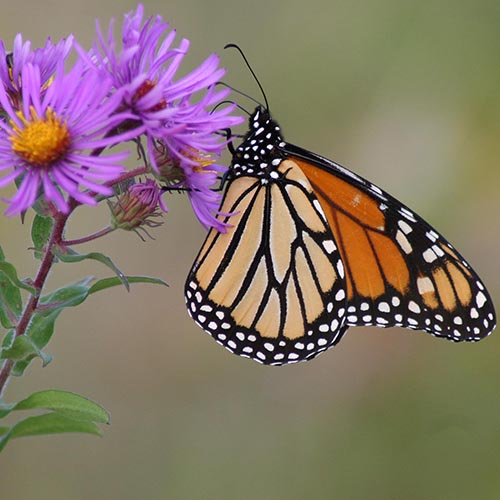
Diversity Matters When Gardening for Monarchs
in PodcastWhen it comes to gardening for monarchs, the most common thing you hear is “plant milkweeds.” Milkweeds are important, because they are the only thing that monarch caterpillars can eat. But they aren’t the whole story. In fact, having other types of flowering plants available can actually make your gardens more attractive to monarchs according…
-
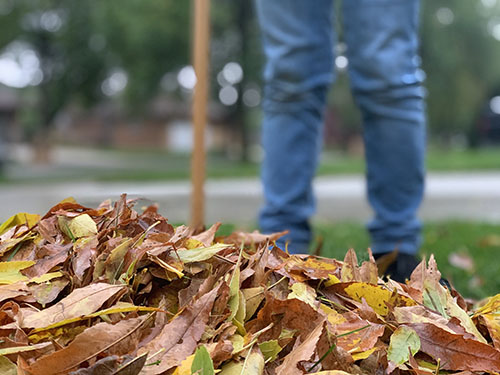
Leave Your Fall Leaves for Pollinators and Wildlife
Think of fall in the eastern U.S. and fall foliage is likely to be high on the list of things that comes to mind. People will drive for hundreds of miles to admire a forest ablaze in bright red, orange, and yellow leaves. More than one vacation, wedding, or other special event is planned each…
-
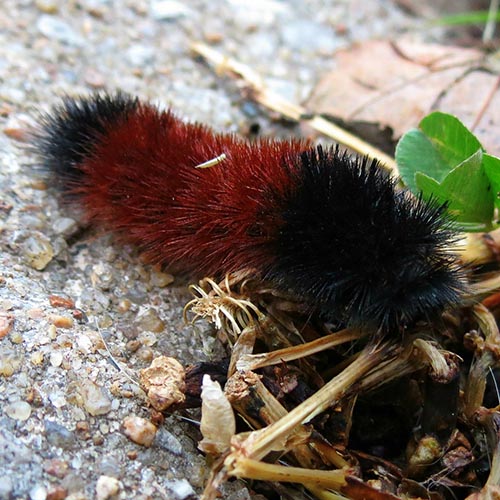
Woolly Worms or Woolly Bears: Winter Weather Forecasters?
Overview Woolly worms, also known as woolly bears, may be our most familiar and well-recognized moth caterpillar. Every fall we see them steadily marching across driveways and streets in search of a place to spend the winter. And every year, predictions are made about what the upcoming winter is going to be like based on…
-
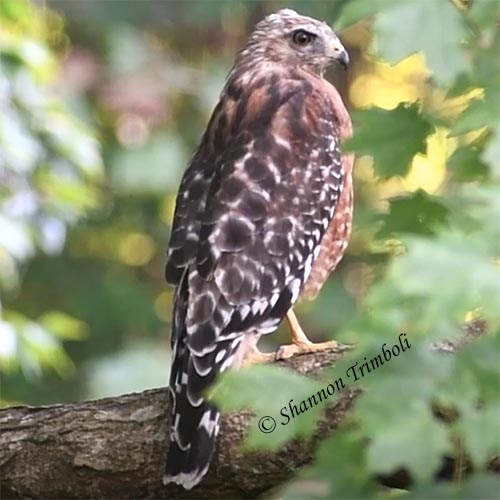
Recent Nature-related Discoveries in My Yard and Community
It’s been a while since I shared some of my nature-related discoveries with you. So, I thought it was about time to do it again, especially since I found and was able to observe so many fun and cool nature-related discoveries in August and September. Below are just a few of them. American carrion beetles…
-
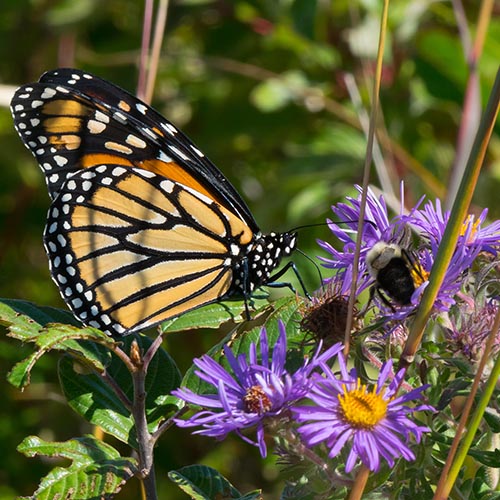
New England Aster: A Beautiful and Diverse Native Wildflower
New England aster (Symphyotrichum novae-angliae) is a late summer / early fall blooming wildflower that is native throughout most of North America. In the last decade or so, it has become a fairly common plant to include in native plant and pollinator gardens, as well as, in larger habitat restoration projects. However, it was introduced…
-
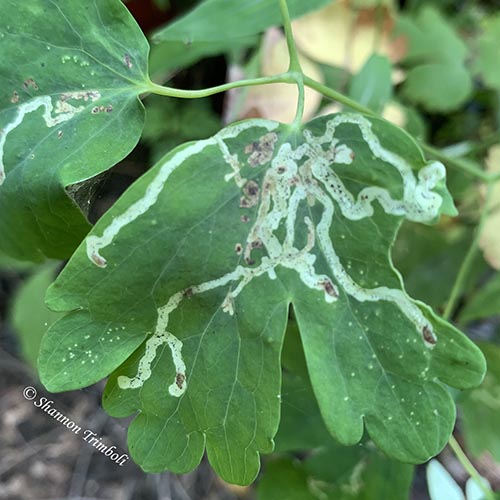
Crossover Episode with Nature’s Archive: Charley Eiseman – Naturalist, Author, Innovator, and Leaf Mining Insect Specialist
in PodcastThis episode is different from anything I’ve done before, because Michael Hawk, who hosts the Nature’s Archive podcast, and I are sharing each other’s episodes. One of the things I really like about the Nature’s Archive podcast is that in addition to the biology, Michael also digs into the stories of how his guests got…
-
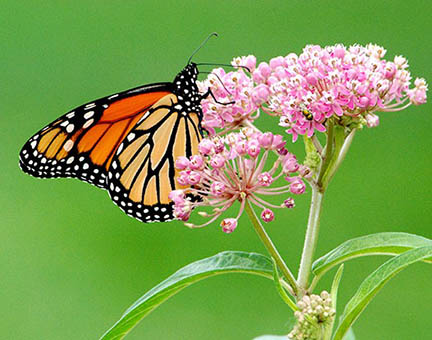
Plant Multiple Species of Native Milkweeds for Monarch Caterpillars
I’m often asked what is the best species of milkweed to grow for monarchs. In many ways, the answer is whatever species is native to your area and has the tastiest leaves for the monarch caterpillars to eat at that particular instant in time. Let’s talk about that statement for a minute, why it’s true…
-
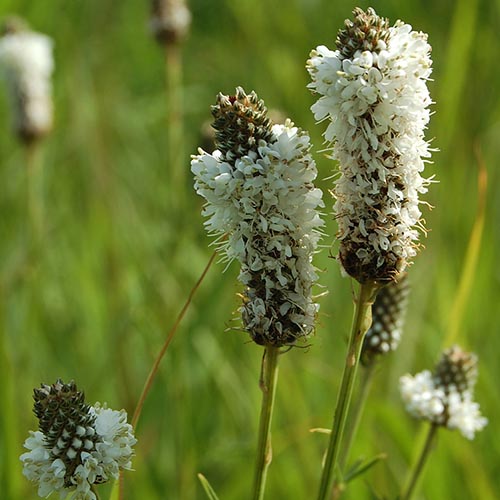
White Prairie Clover: A mid-summer nectar and pollen source for bees
White prairie clover (Dalea candida) is a native, perennial wildflower throughout most of the Midwest and central U.S. The eastern edge of its native range crosses the Mississippi River and includes Illinois, Kentucky, Tennessee, and Georgia. White prairie clover is also commonly grown in garden settings outside of its native range. General Biology and Life…
-
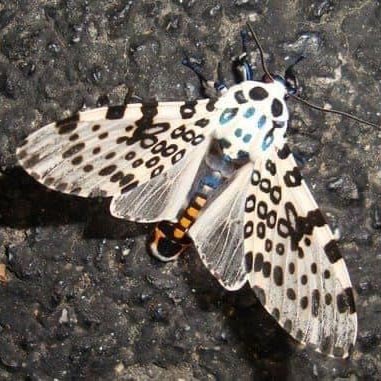
Giant Leopard Moth: Cousins of the Much-Loved Wooly Worm
The giant leopard moth (Hypercompe scribonia) can be found throughout most of the eastern United States. It is a beautiful moth that is fairly easy to observe. Giant leopard moths also have some surprising characteristics that make them fun to learn about. What does it look like? Adult Adults are medium sized moths. The males…
-
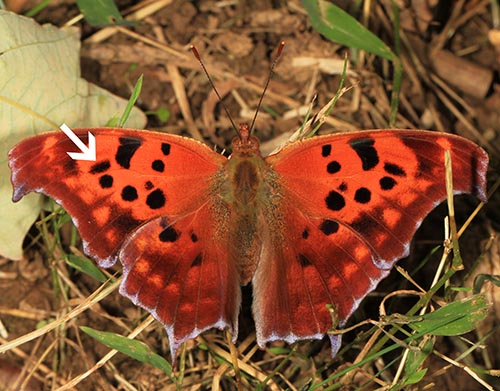
Question Mark Butterfly: One of our earliest flying butterflies
The question mark butterfly (Polygonia interrogationis) breaks many of the stereotypes that we usually place on butterflies. In some places, you can find it flying on warm days in late February or early March. If you do see one fly by, pay close attention to where it lands. They have amazing camouflage that allows them…
-
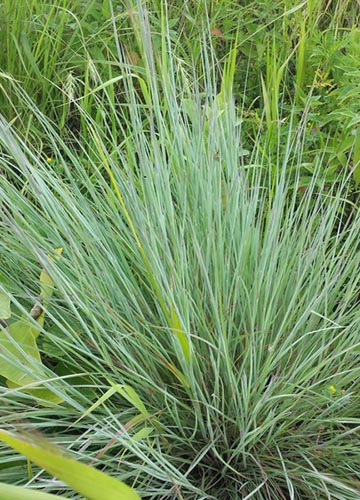
Little Bluestem: A Native Grass for Prairies and Gardens
Little bluestem (Schizachyrium scoparium) is native to the lower parts of Canada and almost the entire lower 48 states in the U.S. It can be found growing naturally in barrens, prairies, savannas, and open woodlands. Little bluestem prefers drier upland sites, but is occasionally found in lower moister areas, especially in some parts of its…
-
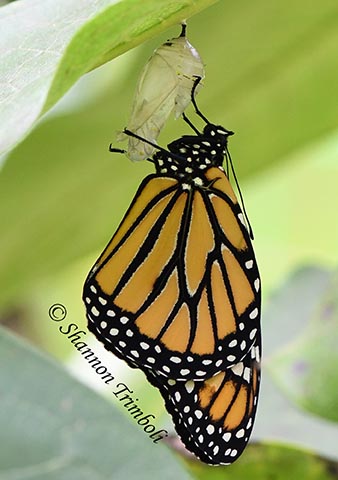
What does the endangered species ruling for the monarch butterfly really mean?
On December 15, 2020, the U.S. Fish and Wildlife Service (USFWS) “found that adding the monarch butterfly to the list of threatened and endangered species is warranted but precluded by work on higher-priority listing actions.” But, what does that really mean? And how does it affect things going forward? What does the ruling mean? To…
-
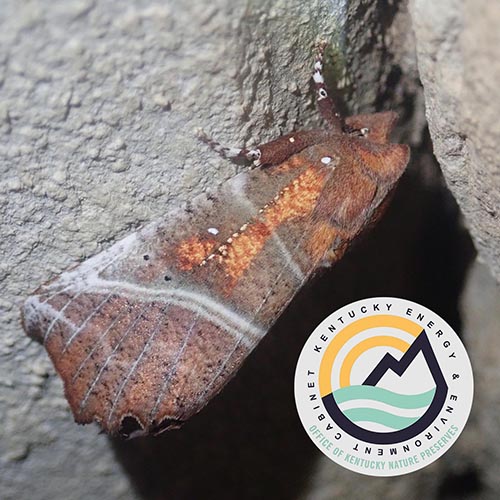
Moths in the Winter with Shelby Fulton
in PodcastHi, Everyone! In today’s episode of the Backyard Ecology podcast we are talking with Shelby Fulton who is a terrestrial biologist with the Kentucky Nature Preserves. Our conversation focuses on moths and how they survive the winter. We also talk about how diverse moths are and ways to observe them during the winter. The number…
-
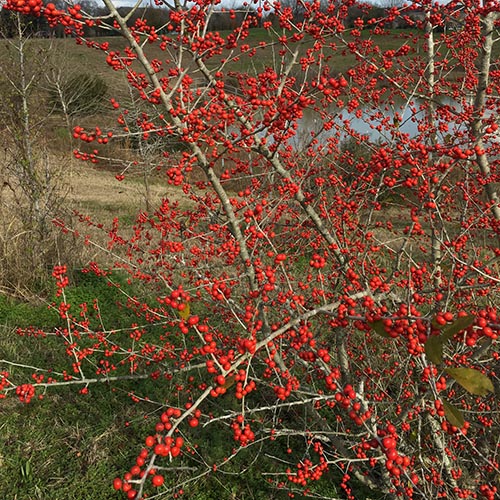
Possumhaw: A deciduous holly
Possumhaw (Ilex decidua) has many common names including deciduous holly, swamp holly, and prairie holly. It is also sometimes called winterberry, but be aware that “winterberry” is more commonly used in reference to Ilex verticillata, which is also a deciduous holly. To make things more complicated, Ilex verticillata is sometimes called “deciduous holly,” even though…
-
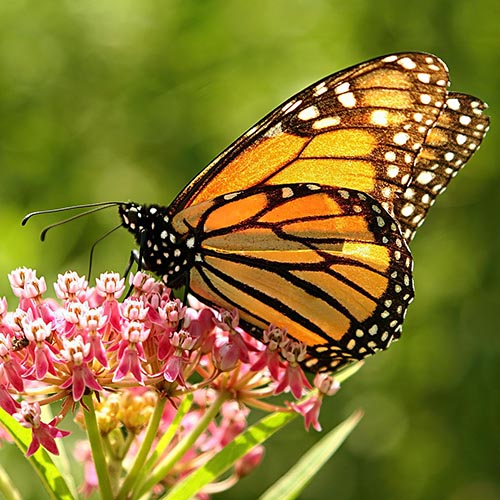
Milkweeds in Urban and Suburban Monarch Waystations with Dr. Adam Baker
in PodcastHi Everyone! Today we are talking with Dr. Adam Baker who recently completed his PhD studying monarch butterflies and their use of monarch waystations in urban and suburban areas. His research has led to some important and easily applied strategies that any of us can use in our gardens. First, Adam looked at existing monarch…
-
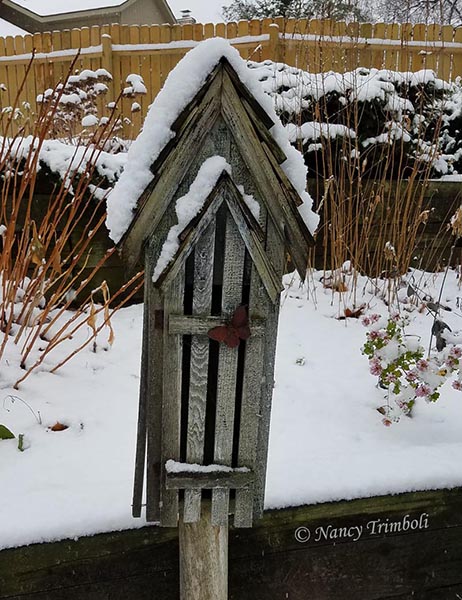
Be Careful if Putting Butterfly Boxes in Your Pollinator Garden
Butterfly boxes, also known as butterfly hibernation boxes or butterfly houses, are long, skinny boxes with thin slits usually on the front. The intent of the butterfly box is to give butterflies a dry place to go during inclement weather or a place to hibernate during the winter. (In the eastern U.S., we have a…
-
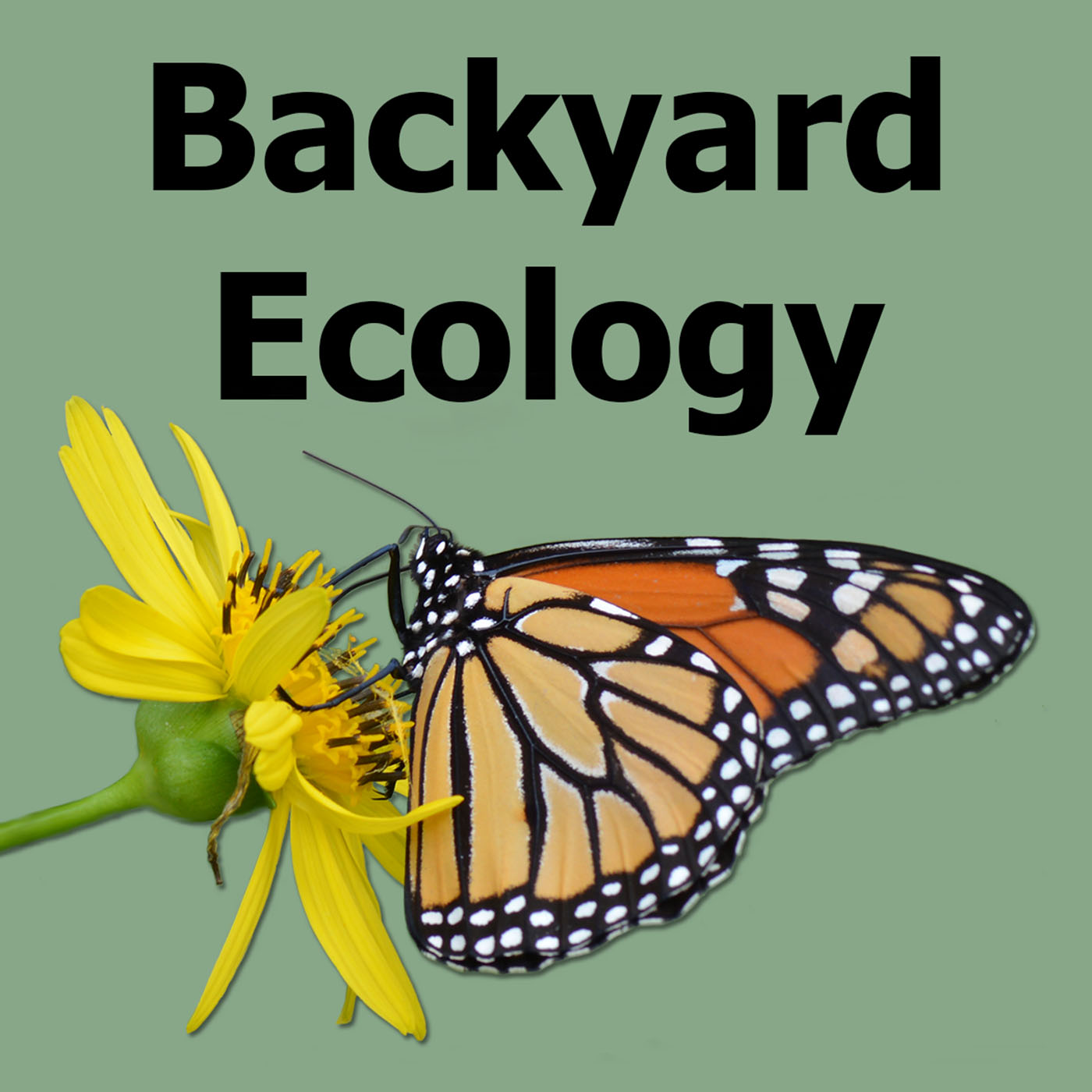
Announcing the Backyard Ecology Podcast
Over the last few months, I’ve been researching and working on a new project. Today I’m super excited to announce that I am launching a Backyard Ecology podcast! For those who might be wondering, a podcast is kind of like an audio version of a blog. I started listening to podcasts about a year and…
-
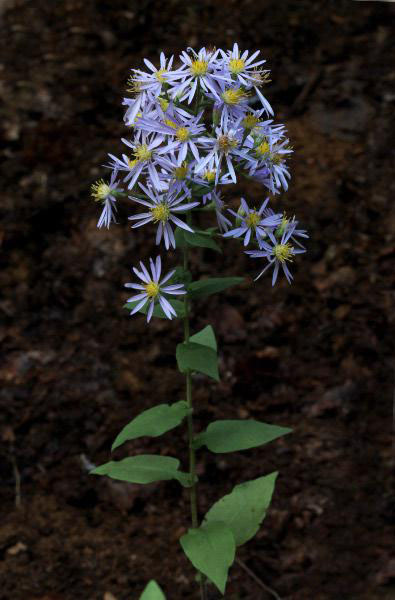
Wavy leaf aster – A late feast for pollinators
The wavy leaf aster (Symphyotrichum undulatum) is a late blooming wildflower that is native to most of the eastern U.S. It is fairly common throughout much of its range and can be found growing wild in dry, open woods and along woods edges. Like many of our other asters, wavy leaf aster can also make…
-
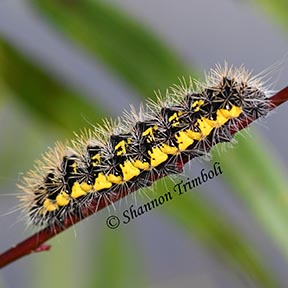
Nature-related Discoveries in My Yard and Community – October 2020
Fall is my favorite time of year. I love the cooler, less humid weather, the distinctive fall smell in the early morning, the beautiful fall flowers, the busy actions of the butterflies and bees as they prepare for whatever winter looks like for them, and the transition from our summer bird species to our winter…
-
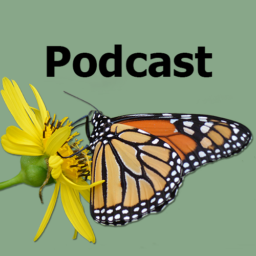
Introducing the Backyard Ecology podcast
in PodcastMany people believe that nature is only “out there” – in national parks, other large chunks of pristine land, or some far-off exotic place. For a long time, I did too. But the truth is that nature is everywhere and there are still plenty of discoveries to be made about the common species inhabiting our…
-
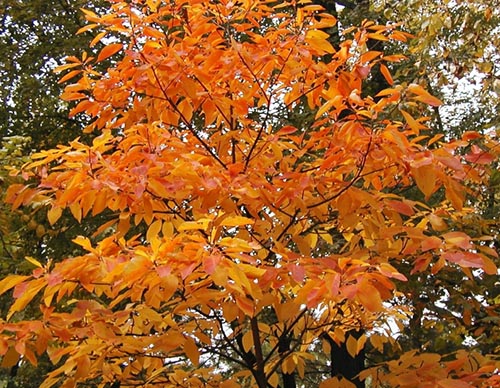
Sassafras – A Beautiful Native Tree Used by Wildlife and Humans
Sassafras (Sassafras albidum) is native to most of the eastern U.S. It is commonly found growing in fencerows, along the edges of woods, along roads or other right-of-ways, in forest openings, and in other sunny to mostly sunny locations. In more mature forests, small sassafras saplings can often be found waiting for a canopy opening…
-

Nature-related Discoveries in My Backyard and Community – September 2020
Over the past several weeks, I’ve been lucky enough to find some amazing critters and enjoy some beautiful wildflowers. In this week’s article, I just wanted to share some of the recent nature-related discoveries I made in my backyard and community. This weird looking wasp is an American pelecinid wasp (Pelecinus polyturator). I discovered it…
-
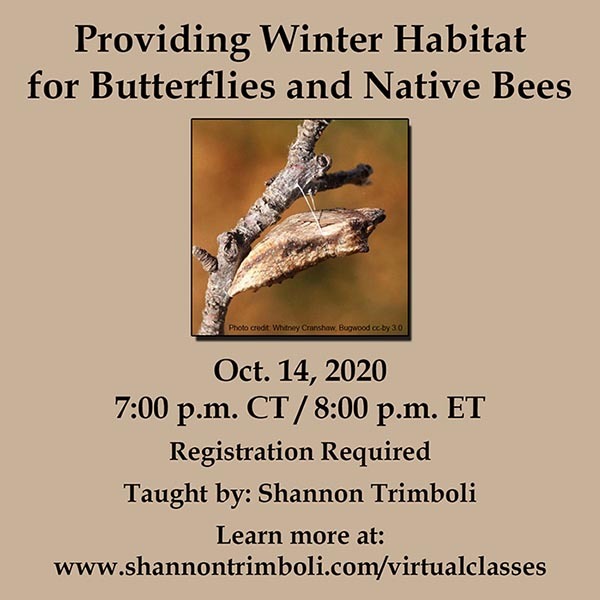
Upcoming Virtual Class: Providing Winter Habitat for Butterflies and Native Bees
On Oct. 14 at 7:00 p.m. CT / 8:00 p.m. ET, I will be teaching a class on providing winter habitat for butterflies and native bees. Pollinator gardening information often focuses on providing lots of flowers for butterflies and bees to use during the growing season. Very little, if any, time is spent talking about…
-
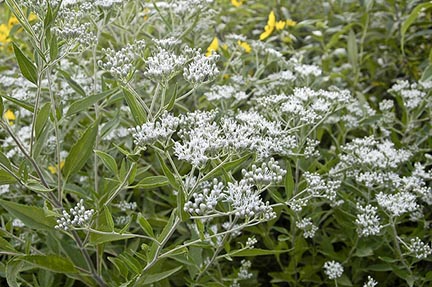
Thoroughworts and bonesets – Some of the white flowers of fall
Thoroughworts and bonesets (Eupatorium sp.) are common fall wildflowers throughout much of the eastern U.S. They are often found growing in fields and other open areas. Their flat-topped clusters of bright white flowers can contrast beautifully with the bright yellow goldenrods or the deep purple ironweeds that often grow in similar habitats. Like the goldenrods,…
-
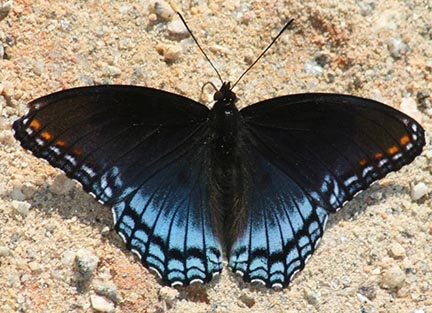
Red-spotted Purple – The dark blue and black butterfly that isn’t a swallowtail
For most of us in the eastern U.S., there are four common species of dark blue and black butterflies. Three of those species are swallowtails, but one of them isn’t. At first glance, the red-spotted purple (Limenitis arthemis astyanax) looks similar to the dark blue and black swallowtails. However, if you give it a second…
-
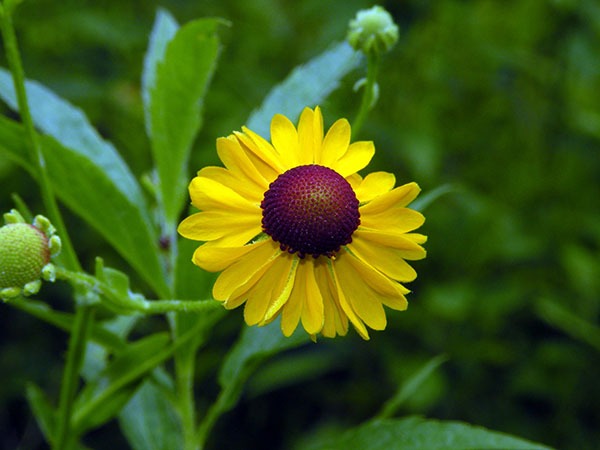
Purple-headed Sneezeweed
Purple-headed sneezeweed (Helenium flexuosum) is a native wildflower in most of the eastern U.S. Although it can be a beneficial and unique addition to pollinator gardens, many people avoid this plant because of its common name. So, let’s address that concern to start with because allergy sufferers have nothing to fear from this plant. Once…
-
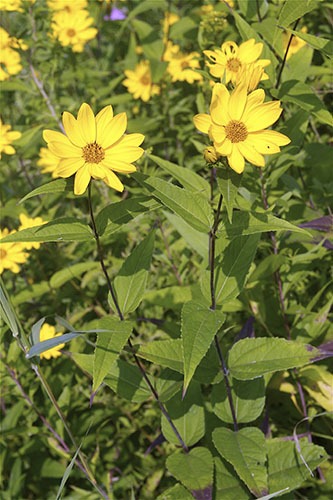
Rough Sunflower
Helianthus hirsutus, a.k.a rough sunflower, hairy sunflower, or stiff-haired sunflower, is a native wildflower in much of the eastern and central U.S. Like its common names suggest, rough sunflower has hairy stems and leaves that give the plant a very rough texture. This rough texture helps make the plant relatively deer resistant. Deer may occasionally…
-
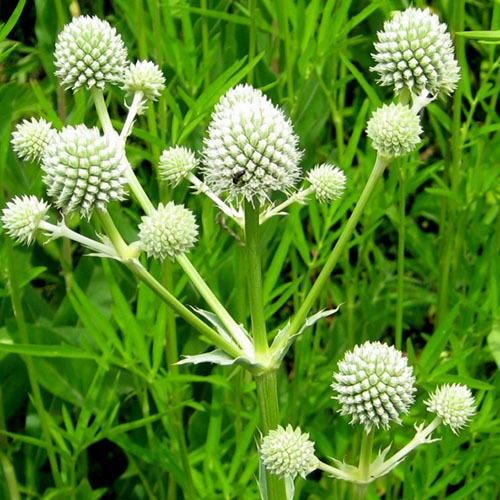
Rattlesnake Master
Rattlesnake master (Eryngium yuccifolium) is an unusual wildflower native to open areas in much of the central and eastern U.S. In the wild, it is an indicator of high-quality remnant prairie or barrens. It is also commonly included in prairie restoration or large pollinator plantings. In recent years, it has increased in popularity as a…
-
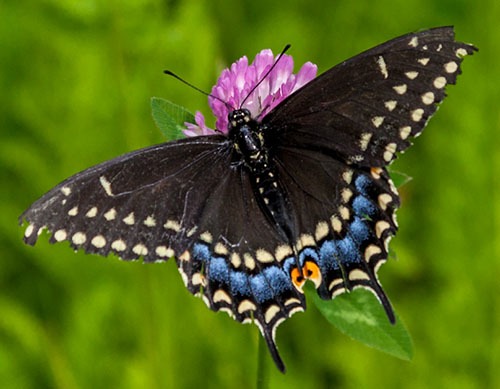
Black Swallowtail
The black swallowtail (Papilio polyxenes) can be found throughout most of the eastern U.S. and parts of the southwestern U.S. They tend to be slightly smaller than the more familiar tiger swallowtails. Black swallowtails are most often found in open areas such as fields, meadows, and yards. It is rarely found in more wooded areas,…
-
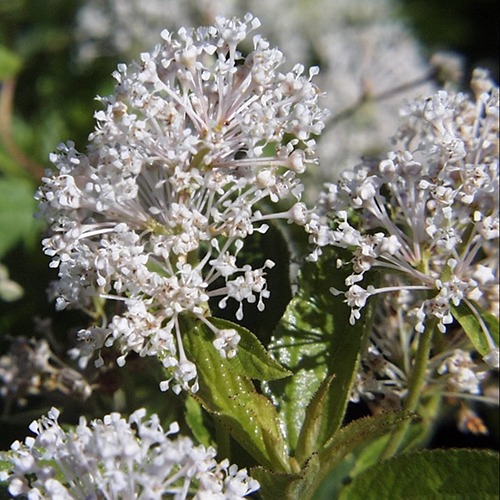
New Jersey Tea
New Jersey tea (Ceanothus americanus) is a low-growing, native shrub that can be found throughout most of the eastern half of the U.S. It is an interesting plant from both an ecological standpoint and from a historical / ethnobotanical standpoint. In the wild, New Jersey tea is typically found in rocky areas, sandy areas, glades,…
-
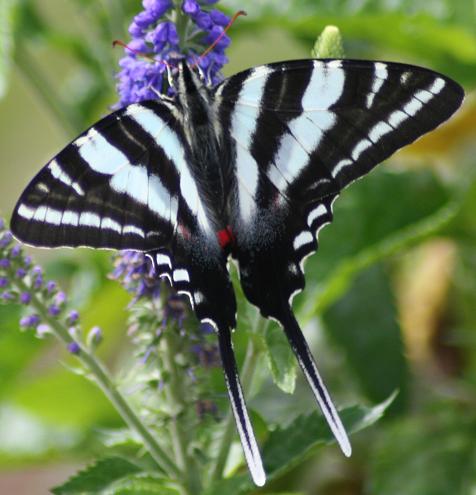
Zebra Swallowtail
The zebra swallowtail (Protographium marcellus, formerly known as Eurytides marcellus) is native to the central and southern regions of the eastern U.S. It is more common in the southern parts of its range and less common the further north you go. Tennessee gives the zebra swallowtail the special honor of being its state butterfly. Like…
-
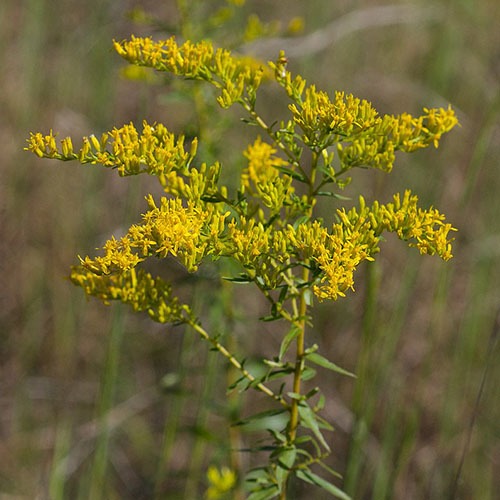
Sweet Goldenrod
Sweet goldenrod (Solidago odora) is one of the over 30 species of goldenrods native to Kentucky according to the USDA Plant Database. This species of goldenrod is also native to most of the eastern U.S. (sorry Indiana, Illinois, Michigan, and Maine – it’s not native in your states) and a few states west of the…
-
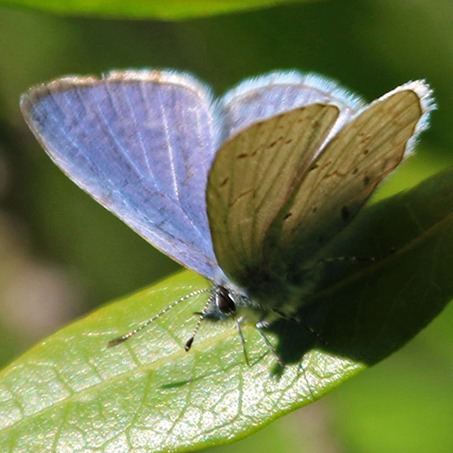
Spring Azure
The spring azure (Celastrina ladon) is a common butterfly that can be found throughout much of the eastern U.S. It is one of the earliest butterflies to appear each year in our region. In Kentucky, spring azures can start flying as early as mid-March. Further south, they may start flying slightly earlier. While further north,…
-
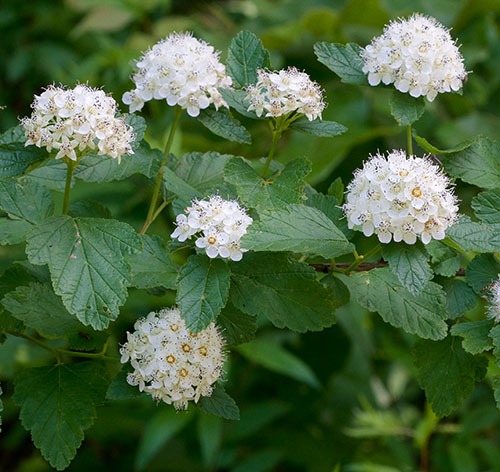
Ninebark
Ninebark (Physocarpus opulifolius) is native to most of the eastern half of the U.S. In the wild, this shrub is often found along streambanks, woods edges, rocky slopes, and moist open areas. Although it is often found naturally in medium to moist locations, once established, ninebark can be very drought tolerant. In recent years, ninebark…
-
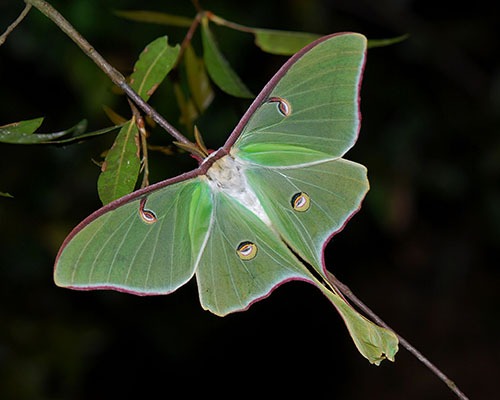
Luna Moth
The luna moth (Actias luna) can be found throughout much of the eastern half of the U.S. It is one of our larger native moths with a wingspan of approximately 4 – 4.5 inches, or about as wide as one and a half post-it notes from the widest point on one wing to the widest…
-
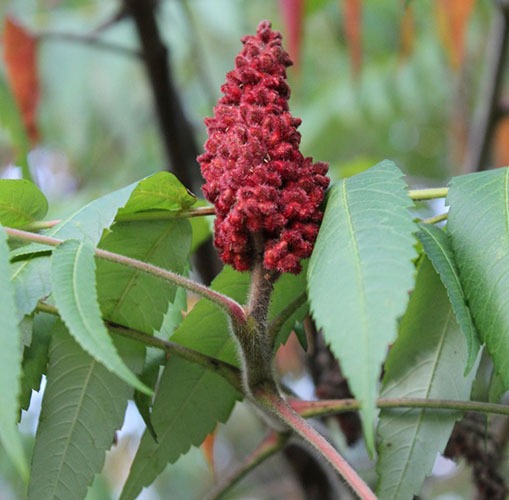
Staghorn Sumac
Note: Staghorn sumac and poison sumac (Toxicodendron vernix) are two different plants. They are both in the cashew family, but poison sumac is more closely related to poison ivy (Toxicodendron radicans) than staghorn sumac. At one time poison ivy and poison sumac were considered part of the Rhus genus, and some older references still contain…
-
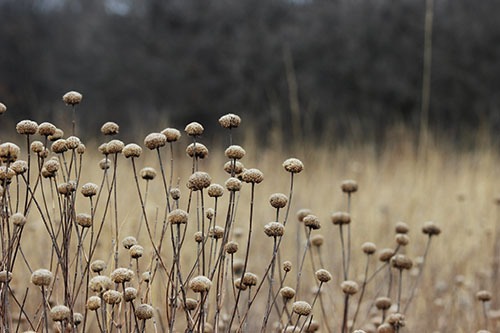
Only Mow Part of a Field Each Year
When mowing or bush hogging a field, only do approximately 1/2 to 1/3 of the field each year. This creates a more complex and multiple-aged habitat which benefits both wildlife and pollinators. For example, many of our butterflies will overwinter as a chrysalis attached to grass or flower stalks. Several of our native bees will…
-
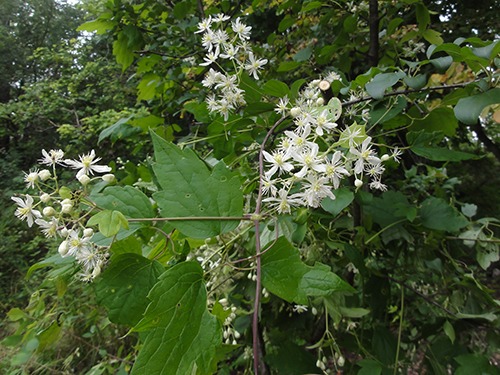
Virgin’s Bower
Virgin’s bower (Clematis virginiana) is a native vine that grows throughout much of the eastern two thirds of the country. As the scientific name suggests, this is a native clematis and related to the exotic clematises that are common in the horticulture trade. In the wild, virgin’s bower is most often found along streambanks or…
-
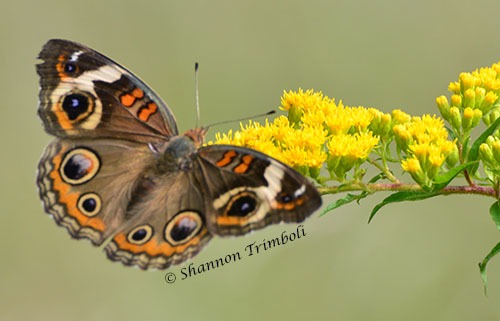
Common Buckeye
The common buckeye (Junonia coenia) is a familiar summer and fall butterfly throughout much of the U.S. They are easy to observe because they are found in open fields and gardens, and they tend to fly relatively low. Common buckeyes will also land on patches of bare dirt or mud. Buckeyes get their name from…
-
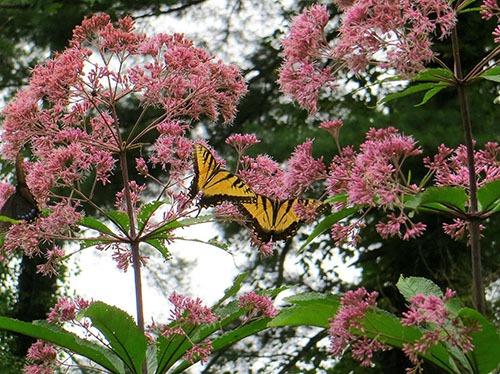
Joe-pye Weed
Joe-pye weeds are tall, native wildflowers that produce a large, pink cluster of flowers in the late summer / fall. Five species of joe-pye weeds (Eutrochium sp.) can be found in the eastern U.S. The three most common species are hollow joe-pye weed (Eutrochium fistulosa), spotted joe-pye weed (Eutrochium maculatum), and sweet joe-pye weed (Eutrochium…
-
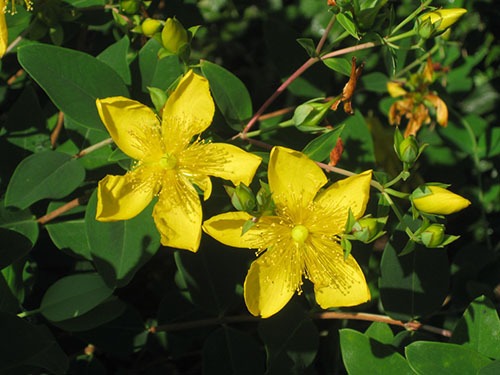
Shrubby St. John’s Wort
Shrubby St. John’s wort (Hypericum prolificum) is a native shrub throughout most of the eastern half of the U.S. It can be 2-5 feet tall and grows in a wide variety of soils. It grows in full sun to partial shade, but prefers more sun. In recent years, shrubby St. John’s wort has also grown…
-
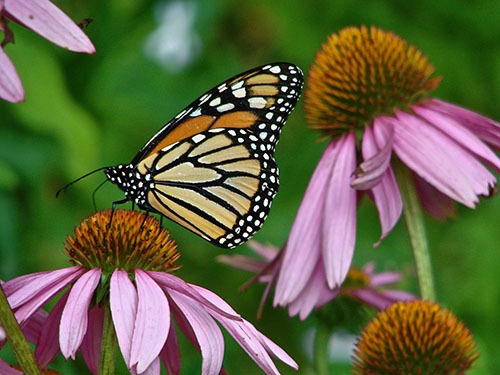
Purple Coneflower
Purple coneflower (Echinacea purpurea) is a perennial wildflower native to most of the eastern 2/3 of the U.S. In the wild it is found in open prairies and meadows. It is also commonly planted in prairie restoration sites or similar settings and has become a popular ornamental flower that can be found throughout the horticulture…
-
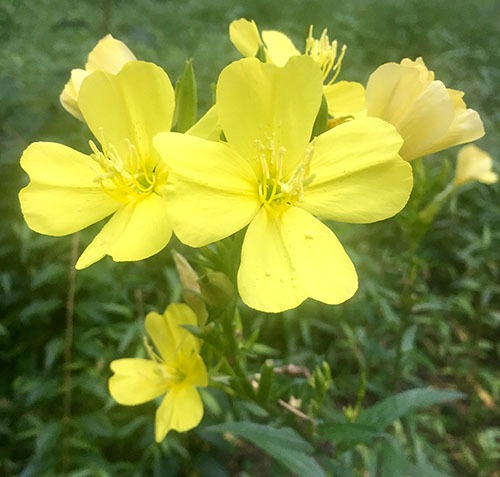
Common Evening Primrose
The common evening primrose (Oenothera biennis) is a native wildflower in most of the U.S. It is found naturally in sunny fields, roadsides, prairies, and disturbed areas. Common evening primrose can also be grown in the garden as a native wildflower. It is a biennial, meaning that it lives for two years and only blooms…
-
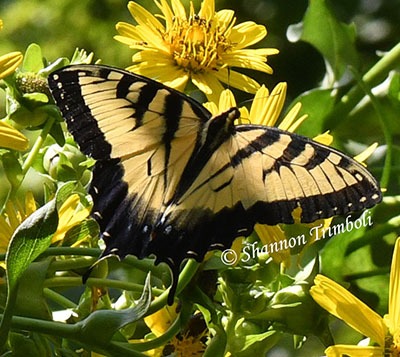
Eastern Tiger Swallowtail Butterflies
The eastern tiger swallowtail butterfly (Papilio glaucus) is a familiar visitor to backyards throughout the eastern U.S. Tiger swallowtails are one of our largest butterfly species with wingspans between 3 and 5.5 inches wide. Because they are so large and so brightly colored, they are easily spotted when visiting garden flowers. In Kentucky, we typically…
-
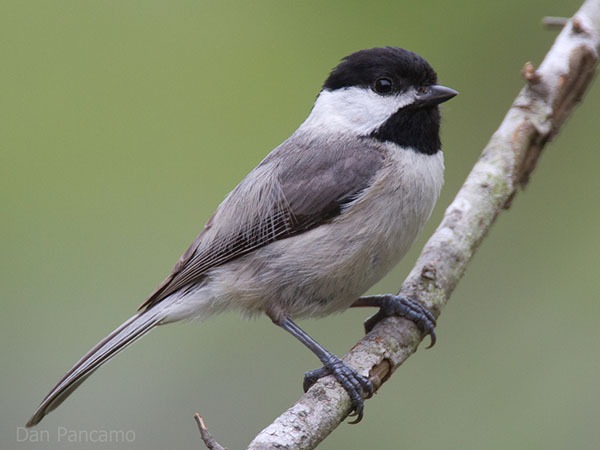
Plant at least 70% of yard in native plants to increase songbird nesting success
Carolina chickadees are not able to successfully raise enough young to maintain their population numbers in areas where less than 70% of the plants are native species, according to new research from the University of Delaware. The study was conducted in backyards throughout Washington, D.C. The research looked at the relationship between Carolina chickadee nesting…
-
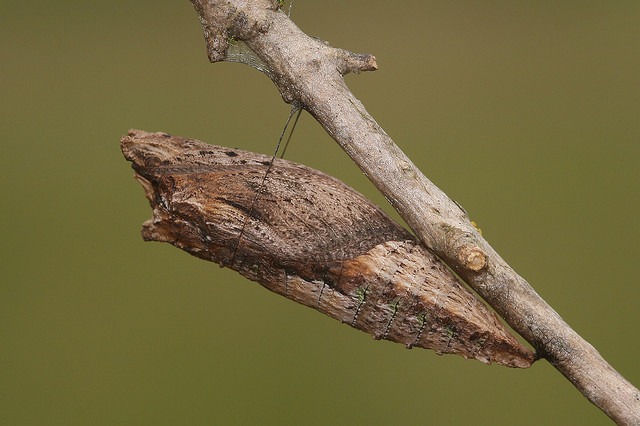
Provide Winter Habitat for Butterflies and Moths
If you are like me, winter is not typically when you think about providing habitat for butterflies and moths. In fact, until I started researching and learning about pollinators, I never even thought about how butterflies and moths survive the winter. I knew monarchs migrated, but didn’t have a clue about our other species. I…
-
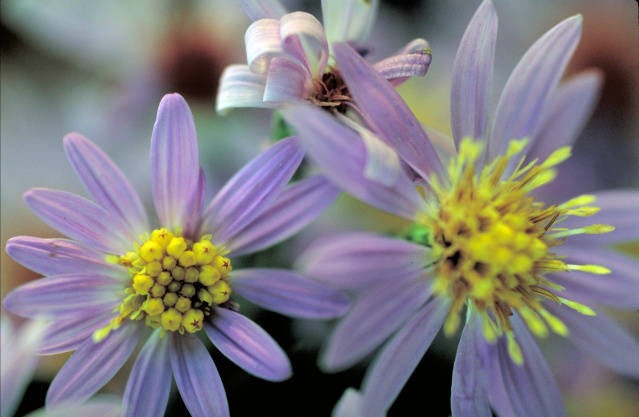
Short’s Aster
Short’s aster (Symphyotrichum shortii) is a native wildflower that can be found in Kentucky, Tennessee, and most of the surrounding states. It’ll grow to about 3 feet tall. The upper portion of the stem and upper leaves have tiny, stiff hairs that give the plant a slightly rough feeling. It often grows in relatively dry,…
-
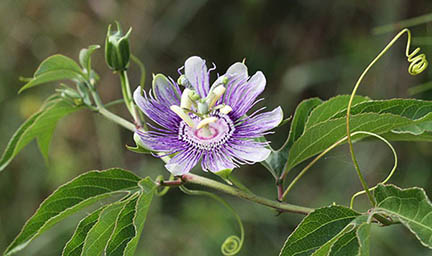
Passionflower
Passionflower (Passiflora incarnate) is a deciduous vine native to most of the eastern U.S. and a few states west of the Mississippi River. It is often found trailing along the ground or climbing up nearby vegetation in sunny areas. The passionflower is the state wildflower of Tennessee. In Kentucky, passionflower blooms from May through August. The…
-

Grey-headed Coneflower
The grey-headed coneflower (Ratibida pinnata) is a perennial wildflower native to most of the eastern U.S. It grows naturally in dry prairies and barrens. Grey-headed coneflowers have also become a favorite addition to prairie restoration areas, pollinator plantings, and wildflower gardens. Another common name for the grey-headed coneflower is the yellow coneflower. Grey-headed coneflowers can…
-
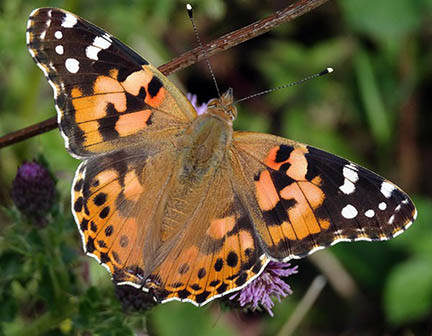
Painted Lady
Painted ladies (Vanessa cardui) are common Kentucky butterflies that can be found on every continent except Antarctica and Australia. It is often considered the most globally widespread butterfly in the world. Painted ladies are primarily orange and brown with some white highlights. Their wingspan is only 2-3 inches wide. While this little butterfly may not…
-
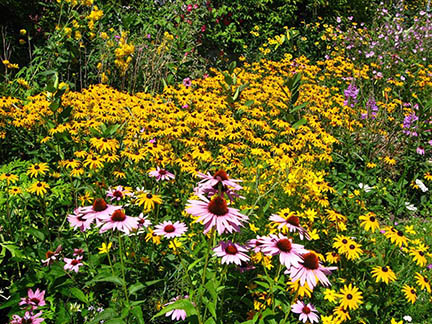
Incorporate Native Plants into Your Landscape
Incorporating native plants into your landscape can be a simple and effective way to attract pollinators and wildlife to your yard. While you can choose to plant only natives, you can also choose to have a mix of native and non-native plants. It doesn’t have to be all or nothing. Below are a few reasons…
-
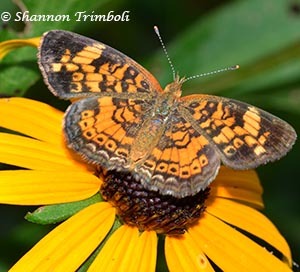
7 Tips for Planting for Butterflies
Butterfly gardens are growing in popularity. When done properly, they can be a great way to attract these beautiful pollinators to your yard. Here are seven tips to keep in mind as you are planting for butterflies. 1) Think about what species of butterflies you want to attract. Different species of butterflies require different food…
-
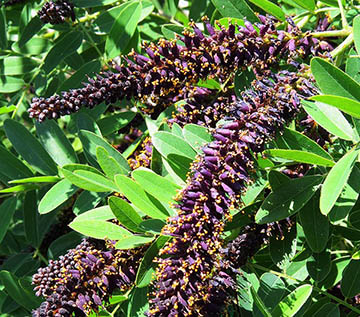
False Indigo Bush
False indigo bush (Amorpha fruticosa) is a member of the legume or pea family. It is native to Kentucky and much of the eastern U.S. The leaves look very similar to the leaves of black locust (Robinia pseudoacacia) which is also in the pea family. False indigo bush typically grows 6-10 feet tall and has…
-
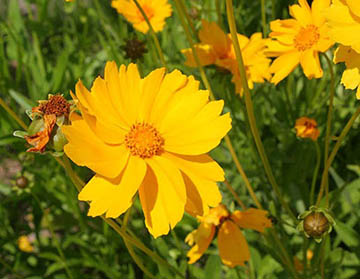
Lance-Leaf Coreopsis
Lance-leaf coreopsis (Coreopsis lanceolata) is native to most of the continental U.S. It is one of eight species of coreopsis native to Kentucky and is the species that is the most common. Other names for lance-leaf coreopsis include tickseed and sand coreopsis. The name tickseed comes from the fact that its dark brown seeds resemble…
-
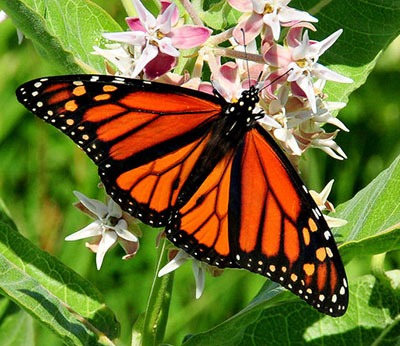
Monarch Butterflies and Their Migration
The monarch butterfly is one of the most widely recognized and celebrated butterflies in the U.S. For many of us, the love affair started in grade school when we learned about the monarch’s migration and their giant winter clusters in Mexico. The U.S. has two populations of monarch butterflies – an eastern and a western…
-

Swamp Milkweed or Rose Milkweed
Swamp milkweed, also called rose milkweed, (Asclepias incarnata) is one of 13 milkweed species native to Kentucky. It can be from 3-6 feet tall, but 3-4 feet is more common. Swamp milkweed has clusters of pink flowers that bloom from June through August, depending on the plant and whether it was mowed or grazed before…
-
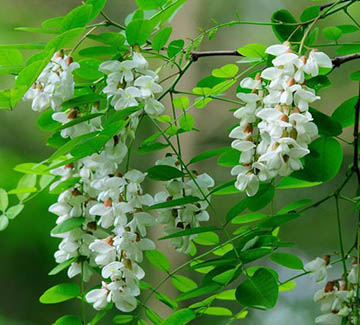
Black Locusts
Black locusts (Robinia pseudoacacia) are tall trees native to the Appalachian region and parts of the Ozarks, but they have been widely planted across the U.S. and in parts of Canada. They have even been imported to other parts of the world where they are often planted as ornamentals. Black locusts grow very quickly but…
-
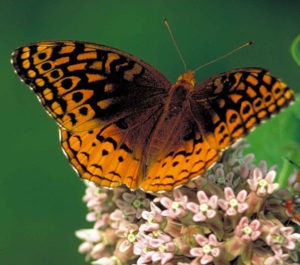
Great Spangled Fritillary
Great spangled fritillary butterflies (Speyeria cybele) are medium-sized butterflies commonly found in meadows, fields, and yards across Kentucky and many of the surrounding states. Its wingspan is approximately 2.5 to 3.5 inches wide. The name fritillary is derived from a Latin word that means checkered and refers to all the black spots on the fritillary’s…
-
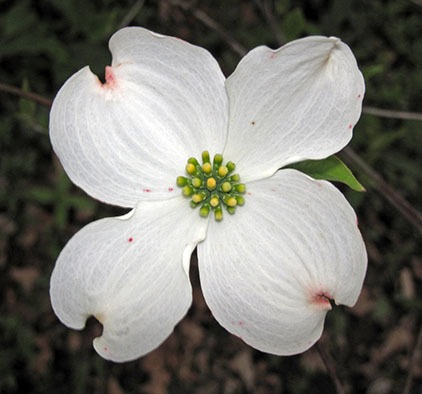
Flowering Dogwood
The flowering dogwood (Cornus florida) is a small tree or tall shrub native to much of the eastern U.S. It is probably the most familiar of our native dogwoods and is the one that most people are referring to when they say “dogwood.” In addition to growing wild in our woods, the flowering dogwood is…
-
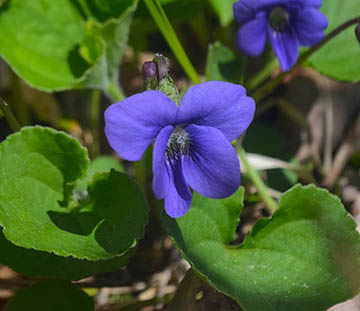
Common Blue Violet
There are over 20 different species of violets native to Kentucky and the surrounding states. Probably the most common of these species is the common blue violet (Viola sororia). The common blue violet grows in a wide range of habitats including meadows, parks, open woods, and yards. It has heart-shaped leaves and blue to purple…
-
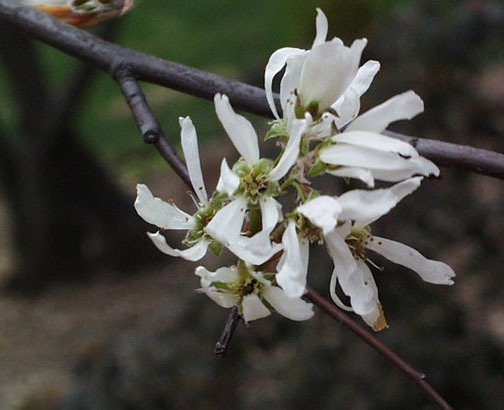
Serviceberry
Serviceberries (Amelanchier spp.) are small trees or large shrubs that typically grow to around 10-15 feet tall, but occasionally can be taller. There are multiple different species of serviceberry throughout the U.S. and Canada. In fact, every state except for Hawaii has a native species of serviceberry. In Kentucky, our two most common native species…
-
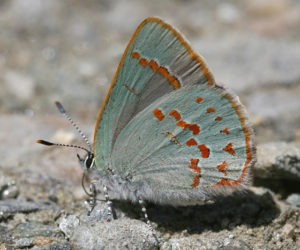
Early Hairstreak
The early hairstreak (Erora laeta) is a small butterfly native to Kentucky. It is only a little less than an inch from the tip of one outstretched wing to the tip of the other outstretched wing. In other words, its wings would barely cover from the tip of your thumb to your first knuckle. The…
-
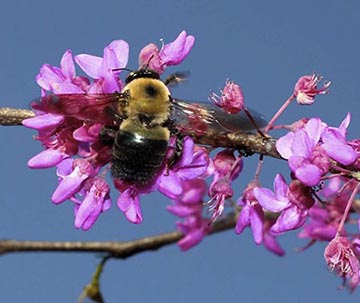
Eastern Redbud
The eastern redbud (Cercis canadensis) is a small tree or tall shrub that is native to much of the eastern U.S. In the early spring, redbuds produce clusters of pink flowers. Redbuds bloom before the leaves have started to appear on most trees and their pretty pink flowers can often be spotted in the understory…
-
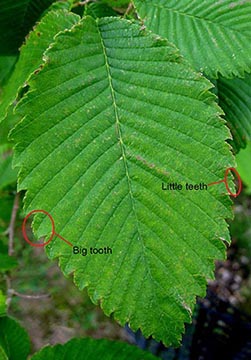
Elms
Elms are deciduous trees and many species can be found in different parts of the world. In Kentucky, we have four species of native elms – the American elm (Ulmus americana), slippery elm (U. rubra), winged elm (U. alata), and rock elm (U. thomasii). Other elms have been introduced as ornamentals and the Siberian elm…
-
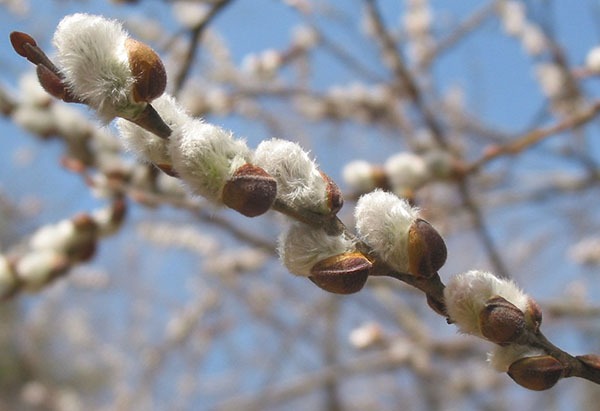
Pussy Willow
Different species of willow can be found throughout much of the Northern Hemisphere. There are several species native to Kentucky and several exotic species can be found growing as ornamentals. The pussy willow (Salix discolor) is perhaps our most familiar native willow, even though it is not Kentucky’s most common native willow. In addition to…
-
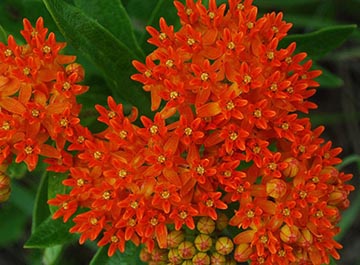
Butterfly Milkweed
Butterfly milkweed (Asclepias tuberosa) is one of several milkweed species native to Kentucky and the eastern U.S. It is a perennial and relatively easy to identify because it is our only orange milkweed. Unlike other milkweed species, this one lacks the characteristic milky sap. Butterfly milkweed can grow up to three feet tall and have…
-
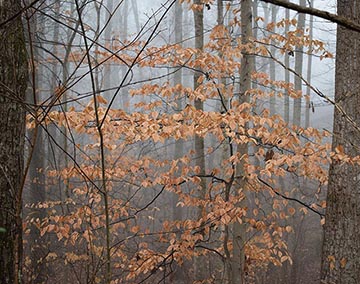
American Beech
The American beech (Fagus grandifolia) is a tall, deciduous tree that is native to the eastern U.S. It is the only beech tree native to North America. Other beech species are native to Europe and are sometimes planted as ornamentals. However, when most people in the eastern U.S. talk about beeches they are referring to…
-
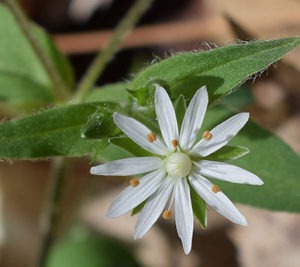
Chickweeds
Several species of chickweeds (Stellaria spp.) can be found in Kentucky and the surrounding states. The most common species are common chickweed (S. media) and star chickweed (S. pubera). Common chickweed is an exotic introduced from Europe. It is commonly found in yards and other disturbed locations. In Kentucky, it is considered a severe invasive…
-
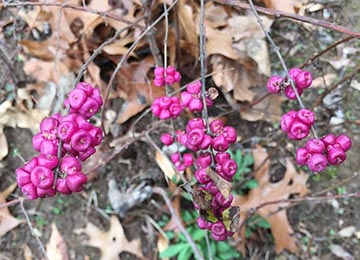
Coralberry
Coralberry (Symphoricarpos orbiculatus) is a deciduous shrub that is native to most of the eastern half of the U.S. It typically grows 2-4 feet tall and is most commonly found in semi-open woods. Coralberry blooms during the summer, but the flowers are not very showy and are often overlooked. It produces pinkish to purplish berries…
-
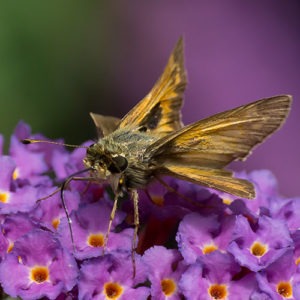
Skippers: Common, but often Overlooked Butterflies of Kentucky
Over the last week, I’ve noticed an increase in the number of brightly yellow tiger-swallowtail butterflies. Tiger-swallowtails are one of my favorite Kentucky butterflies and I love taking pictures of them on the milkweed and other wildflowers on our farm. However, there is another group of butterflies that I have also grown to appreciate over…
-
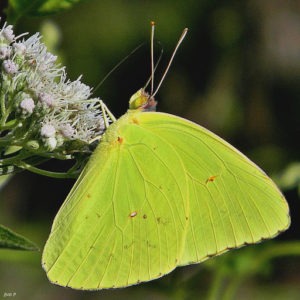
Sulphur Butterflies
Sulphur butterflies are the bright yellow butterflies with relatively few markings that we see in our gardens and other open areas during the summer and fall. Of the medium to small sized butterflies, sulphurs are some of my favorites. There are several species of sulphur butterflies that can be found in Kentucky and much of…
-
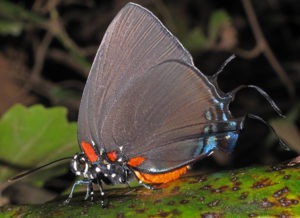
The Great Purple Hairstreak
Looking out my front window, I can see an old walnut tree with a couple of clumps of mistletoe in it. As I look at the mistletoe clumps in the walnut tree, I can’t help but wonder if the walnut tree is providing a winter home to any Great Purple Hairstreak chrysalises. The Great Purple…
-
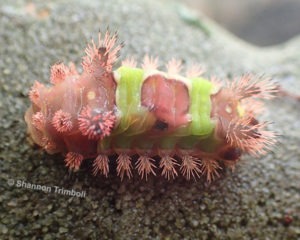
Saddleback caterpillars
I almost had a really bad experience on Sunday. The baby ducks aren’t babies any more. They have learned to fly and while we’ve caught the drakes and trimmed their flight feathers, we haven’t been able to catch the hens yet. They are too fast and can fly too well. Saturday, a couple of hens…
-
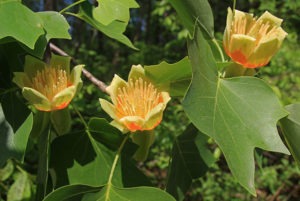
Tulip poplars – A source of abundant nectar and pollen for Kentucky pollinators
The tulip poplar (Liriodendron tulipifera), a.k.a. yellow poplar, tulip tree, or tulip magnolia, is a common and important part of our forests. Despite the name, tulip poplars aren’t poplars. Instead, the tulip poplar is in the magnolia family and is part of a genus that only has two species – the other species is found…
-
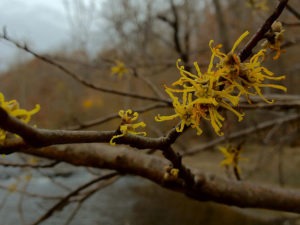
American Witch Hazel: The Last Flowers of the Year
It’s the time of year when almost everything has stopped blooming. If I look hard enough, I might be able to find a few clover, dandelion, or smartweed blossoms left. The crazy cold, then warm weather has also tricked our lilac into putting out a few blooms. However, for the most part, the flowering season…
-
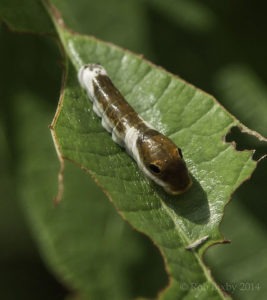
Bird Poop, Snake Head, and Leaf “Costumes” of the Spicebush Swallowtail
The ghouls and goblins of Halloween got me thinking about mimicry in the natural world. Mimicry is when an animal has evolved to look like something else. The spicebush swallowtail caterpillar provides some of my favorite examples of mimicry among Kentucky’s butterflies. The spicebush swallowtail (Papilio troilus) can be found throughout the eastern U.S. It…
-

Black-eyed Susan: A favorite nectar source for butterflies
The black-eyed susan (Rudbeckia hirta) is a native wildflower that belongs to a group of flowers called the coneflowers. The coneflowers include popular wildflowers like the black-eyed susans, brown-eyed susans, purple coneflower, grey-headed coneflower, and many others. Coneflowers are semi-drought tolerant and bloom during the summer. In Kentucky, Black-eyed susans bloom from June to September. What…
